Bengali New Year and Levellers: I spent Sunday 12th May in East London, beginning at Weavers Fields in Bethnal Green for the Boishakhi Mela procession and then moving on to Wapping where a plaque was being unveiled at the burial place of Leveller Thomas Rainsborough. On my way there I was passed by a large group of motorcyclists out for a ride.
Boishakhi Mela Procession – Bethnal Green
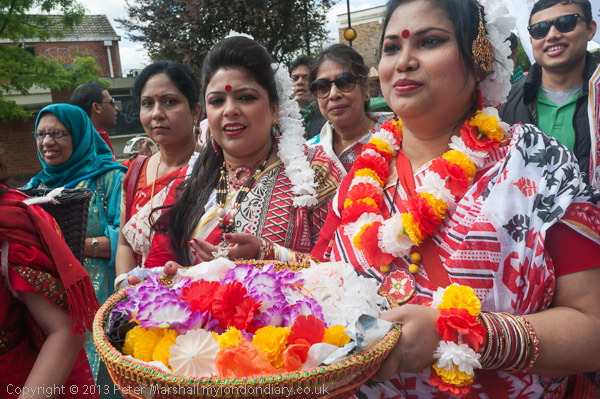
The Bengali New Year is in the middle of April, but when the annual celebrations by the Bangladeshi community in Tower Hamlets began in 1997 they decided April in London was too cold and likely to rain and moved their celebration to a month later.
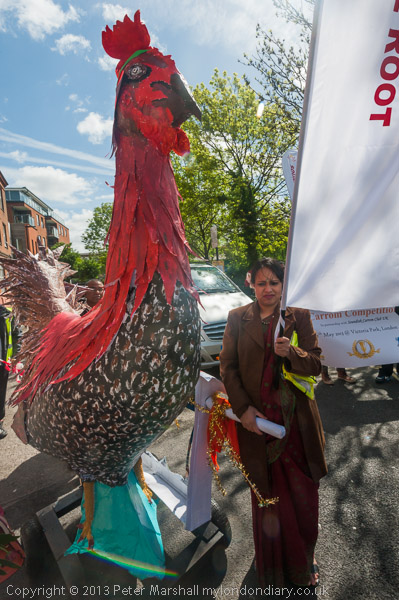
The celebration, which I’d photographed in 2006 and 2008, had been based around Brick Lane, but had by 2013 become a victim of its own popularity and had outgrown its original location, and had been moved to Victoria Park, well away from the centre of the Bangladeshi community. I think in later years it returned to its original location in the Brick Lane area, but I’ve not been back since.
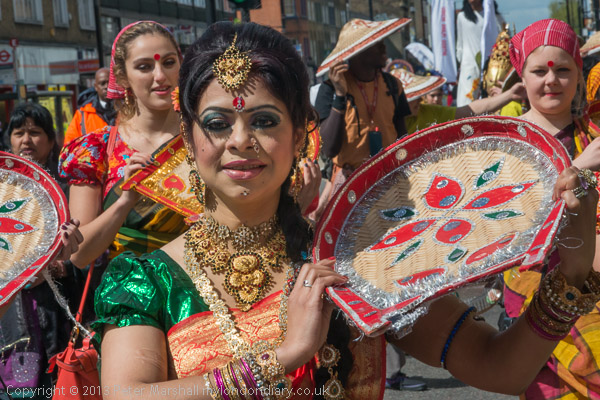
The Mela is said to be the largest celebration of Boishaki outside of Bangladesh, and it was certainly very crowded when I was in Brick Lane in 2008. Tower Hamlets Council had that year banned it on safety grounds from using their parks, but later allowed them to use Weavers Fields for the main stage. It is said to be the second largest street festival in UK – though at around 80,000 taking part it is still an order of magnitude smaller than Notting Hill.
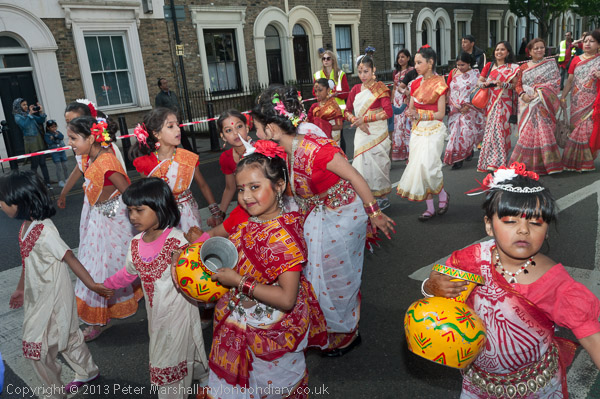
But as the pictures show it is a very colourful event. The council took over the management of the festival in 2009 when a record 95,000 people attended.
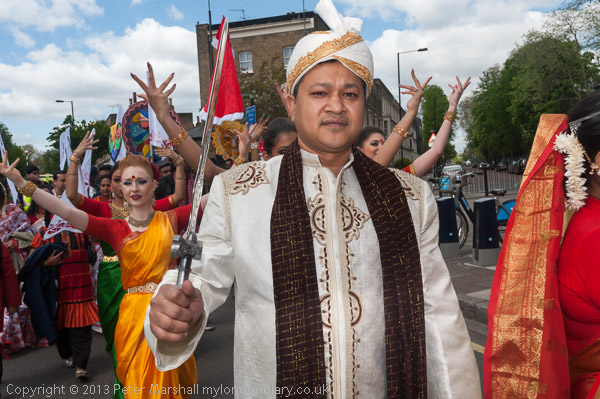
I walked with the procession to the gates of Victoria Park taking photographs, but left as they entered the park to go to Wapping.
Bikers – Bethnal Green
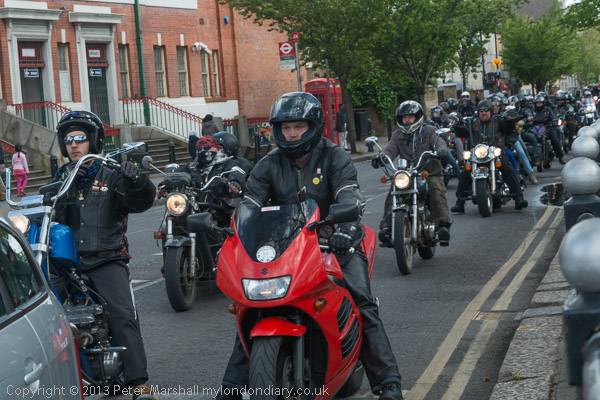
The Boishakhi Mela Procession had been held up for a couple of minutes in Bethnal Green and had to wait as a large group of motorcyclists made its way down Old Ford Road where they were to go. I talked briefly with some of the bikers as they waited at the traffic lights, but conversation was rather difficult over the noise of perhaps a hundred poorly silenced engines. But I think they were simply a group from Dagenham and other parts of Essex out for a ride around London.
Leveller Thomas Rainsborough – St John’s Churchyard, Wapping
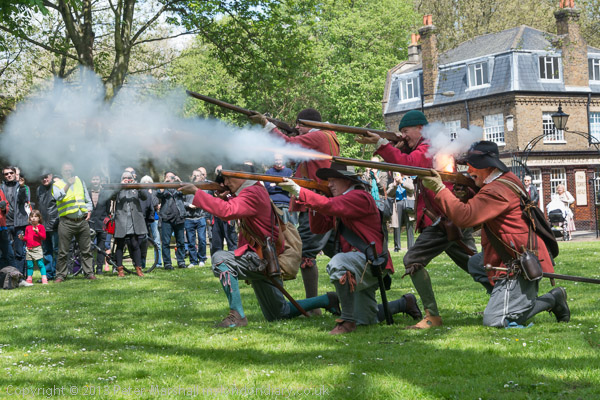
Although I had walked through and photographed the small park, saved from being built on by local campaigners, which had been the churchyard of St John’s in Wapping, I don’t think I had previously known it was where Thomas Rainsborough had been buried.

Colonel Thomas Rainsborough was a military leader in Cromwell’s New Model Army, fighting for Parliament against the king in the English Civil War. He was killed by a Royalist raising party during the siege of Pontefract on 29 October 1648 and buried at Wapping on 14th November.
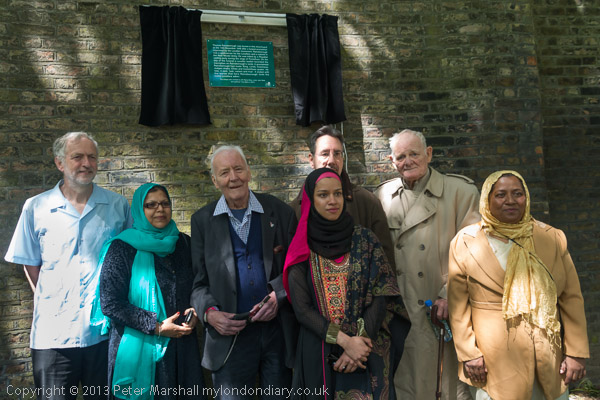
Rainsborough is best remembered now for his statement in the Putney Debates in London in 1647 about all men being equal:
"For really I think that the poorest he that is in England hath a life to live as the greatest he; and therefore truly, sir, I think it’s clear that every man that is to live under a government ought first by his own consent to put himself under that government; and I do think that the poorest man in England is not bound in a strict sense to that government that he hath not had a voice to put himself under…"It was truly a revolutionary idea at the time, and he was labelled as an extremist. He was the most senior officer to support the Levellers.
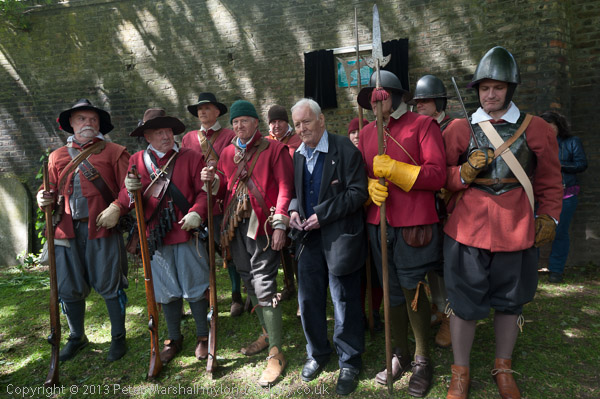
The four Royalists had entered his lodgings at night and attempted to arrest him. There was a huge funeral procession by Levellers from Tottenham to Wapping for his burial. His sea-green regimental standard (a replica of which was carried by the Sealed Knot’s ‘Colonel Rainsborough’s Regiment of Foote’ in today’s ceremonies) was torn into strips and the sea-green ribbons became a Leveller symbol.
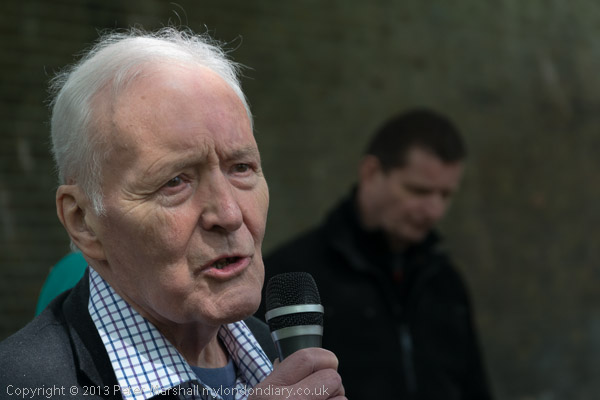
He had been an important military leader, in command of 1500 musketeers, but today there just five from the Sealed Knot, along with an officer and some pikemen, but they put on an impressive performance for the hundred or so of us who had turned up for the event, with speeches by John Reese, Tony Benn and others before Tony Benn pulled the string to unveil the plaque. This included words from the inscription on his long lost tomb which proclaimed he had made ‘Kings, Lords, Commons, Judges shake, Cities and Committees quake‘.
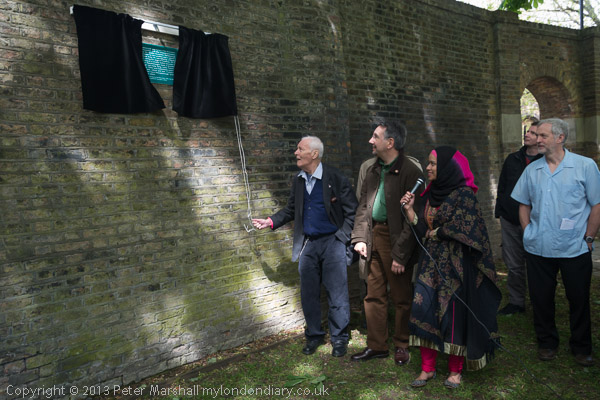
After the official proceedings and while photographs were being taken Ian Bone of Class War seized the opportunity to speak against the appropriation of Rainsborough by members of the political establishment who had taken part in the ceremony, but would still be opposed to the radical ideas put forward by the Levellers.
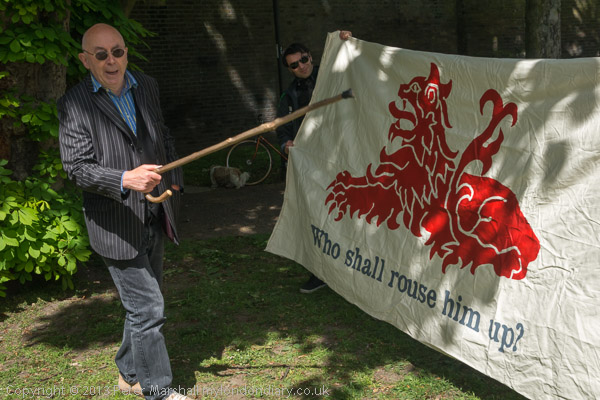
Standing in front of a fine banner showing a red sleeping lion with the text ‘Who shall rouse him up’ he spoke about the more radical Fifth Monarchists, fifty of whom staged a brief and doomed insurrection following the restoration in 1661, led by Thomas Venner. They stormed St Paul’s Cathedral on January 1 and held parts of London for three days before all were killed or taken prisoner. Venner was captured after suffering 19 wounds, tried and then hanged, drawn and quartered on 19 January 1661.
More at Leveller Thomas Rainsborough.













